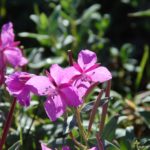
Overseas Countries
and Territories Association

Overseas Countries
and Territories Association
Nanna Nivi Pedersen
Secretary of Embassy at Greenland Representation to the EU
Acting Member of the Executive Committee of OCTA

The Greenland ice sheet covers about 81% of Greenland’s surface. The weight of the ice has depressed the central land area into a basin shape, whose base lays more than 300 metres below the surrounding ocean. Elevations rise suddenly and steeply near the coast.
The climate is arctic with permafrost and the average temperature does not exceed 10° C in the warmest summer months. The air quality in Greenland is among the best in the world due to the country’s geographical position to the high north. In the southern part of the country and the innermost parts of the long fjords, the temperature can, however, rise to more than 20° C in June, July or August. Greenland is also on the forefront of climate change as Artic ice is melting.
During the brief and intense Arctic summer, the mountain landscapes are adorned with a wealth of colours from flowers, herbs, mosses and heather. There are five types of orchid flower in Greenland. The Greenland’s national flower is Niviarsiaq, which means ‘young woman’.
Greenland is a parliamentary democracy, within a constitutional monarchy. It is a part of the Danish Kingdom and with the adoption of the Act on Self Governance from June 12, 2009 it has taken a further step toward increased autonomy since the enactment of the Home Rule Government in 1979. Through these Acts, the People of Greenlands right to elect its own parliament and government has been recognized. The two mentioned institutions having legislative and executive power, and also administrative competences over areas such as education, health, fisheries, mineral resources, industry, finance, environment and climate. The Parliament of Greenland is called “Inatsisartut” and is composed of 31 members who are elected for a 4-year period.
More than 90% of Greenland exports stems from fishery activities. Prawns account for 56% of Greenland’s exports and halibut, crab and cod make up the rest. Greenland has been negotiating a Sustainable Partnership Fisheries Agreement with the EU, setting out the future fishing opportunities and financial compensations between the EU and Greenland. The main export countries are the UK, Japan, China, Germany and Denmark.
Greenland has considerable mineral deposits: marble, zinc, lead, silver, platinum groups, molybdenum, rubies, rare earth metals and other industrial minerals. There are also a number of minerals which may prove to be of economic interest, including deposits of gold, nickel, titanium, copper, niobium, tantalite, uranium, iron, diamonds, etc.
Greenland‘s first major hydraulic power plant is situated near the Buksefjord south of Nuuk. The Government of Greenland has since established several additional hydraulic power plants and 70% of Greenland’s public electricity supply now comes from renewable hydropower energy.
GDP: 19 270 million DKK (2018)
GDP per capita: 345 000 DKK (2018)
Greenland is increasingly taking part in EU programmes. Both the government and local organisations are dedicated to investing time and resources into widening the participation of Greenland in research and innovation projects (Horizon Europe), education exchanges for their schools and university (Erasmus+), as well as regional cooperation projects in the northern periphery and Artic (Interreg).
For more information, click here